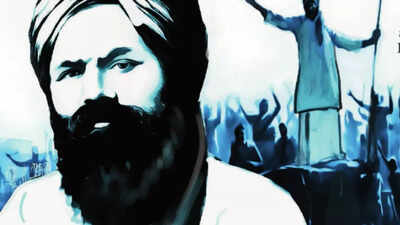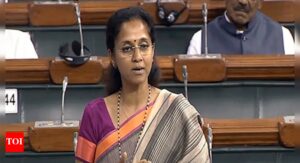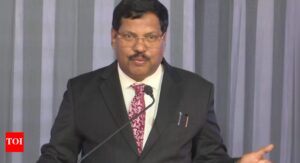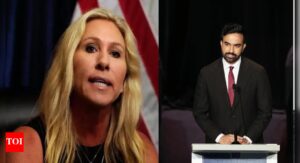Subramania Sivam: The man from the south who breathed fire against the British empire | Chennai News

‘If Indians join together and breathe hard enough, our breath will be enough to blow away the foreigners,’ said Subramania Sivam, who called himself Swatanthiranandar, or one who delights in freedomThe part of Marina Beach opposite Presidency College, today just another stretch of sand for walkers and vendors, was once christened ‘Tilagar Thidal’ by Subramania Sivam, in honour of his political guru, Bal Gangadhar Tilak.But who was Subramania Sivam, the relatively unsung freedom fighter who made the British nervous? Though Sivam spoke of himself as a wayfarer who had the opportunity of conducting the ‘coronation of Swaraj’ in Tirunelveli district, such was the incandescent power and incendiary impact of his Tamil speeches against British rule, that the colonial regime sought to stamp him out of existence. But is there an empire that can quell the spirit of a man who called himself Swatanthiranandar, or one who delights in freedom? Sivam (1884-1925) has been seen as an ‘enigmatic ascetic’ who, through his patriotic speeches, made Tirunelveli district in the deep south reverberate to the revolutionary frequency of West Bengal in the ‘extremist’ phase of the Indian freedom struggle.Sivam, sometimes referred to as Siva, was born in Oct 1884 in Batlagundu, a village known as the gateway to the Kodaikanal hills. He appeared to inherit his hardy physique and free-spirited nature from his father. In his early years, he was well cared for by his maternal grandfather, the village munsiff of nearby Ayyampalayam. But things changed when Sivam moved with his parents to Madurai for his secondary education. It was when the years of poverty began.The family later relocated to Trivandrum to benefit from the free dining hall (oottuppura) offered by the Travancore Samasthanam.As a strapping youth who was called a bayilvan (wrestler, fighter), Sivam also gained mastery over Tamil and English though he failed in his matriculation exams in a Coimbatore school. To an English teacher who liked to repeat, “What I want is common sense”, he is said to have replied, “Exactly so, Sir”, cheekily pointing to the alternate meaning of “want” as lack.Sivam got into bad company in his teens and gained the temporary infamy of being a brawler and bully. But in 1902, Sivam met Sadananda Swami at Trivandrum. The Swami, as Ramanatha Menon, had worked in the Kolar gold mines before becoming a Raja Yogi and Ayurvedic healer. Having taken refuge at Sadananda Swami’s feet, Sivam remained with him like his shadow till Jan 12, 1907. It was as if the aimless ship of his life had finally found its anchorage in the presence of the saint who added Sivam to his name, symbolising union with the divine. Ironically, this would only be the beginning of the greatest challenges and extreme tribulations that Sivam would face in life.The speeches of Thakur Kahan Chandra Verma, an Arya Samaji speaker from Lahore, calling for uncompromising nationalism ignited a blaze of patriotism in Sivam’s heart and he became a passionate speaker himself. “If we Indians join together and breathe hard enough, our breath will be enough to blow away the foreigners,” he would tell his audience.When the Travancore Samasthanam expelled him from the realm, he moved into Cochin and finally to Tirunelveli district, walking all the way while spreading the message of Swarajya in villages and towns through his fearless, frank and fery speeches.It was at this time that V O Chidambaram Pillai, by then the most influential leader in the south of the extremist faction of the Congress, and native entrepreneur who had founded the Swadeshi Steam Navigation Company to compete with British business interests, experienced the electrifying quality of Sivam’s oratory and co-opted him in his nationalistic campaigns.Together, they mobilised labourers of the Coral Textile Mills in Tuticorin and won concessions for them from their British masters in Feb 1908. After the duo disregarded a ban and held a public meeting and procession on March 9 to mark the release of Bipin Chandra Pal who was incarcerated for refusing to divulge the identity of the writers of ‘seditious’ articles in his ‘Bandemataram’, district collector L M Wynch and his impetuous subordinate Robert Ashe had them arrested on charges of sedition, leading to large-scale riots in Tirunelveli. Curiously, while the first accused (Sivam) got 10 years transportation, the second accused (VOC) got a double transportation for life (transportation meaning being locked up in the brutal Cellular Jail in the Andaman Islands). Appeals got the transportation part scored out but they languished in jail for more than four years.The jail terms and the harshness of prison conditions reserved for them, wrecked their lives. Sivam was struck with leprosy. But his wife Meenakshi, to whom he had been married when he was 15, got to meet him in prison, and asked him for the means by which she could lead her life. He wrote his spiritual masterpiece ‘Sachidananda Sivam’ for her, the book being a guide for the higher life of divine seeking. After his release on Nov 2, 1912, he started the monthly ‘Gnanabanu’ with his wife as publisher. Meenakshi, however, died of tuberculosis on May 15, 1915, aged 27.For ten more years, Sivam trudged on despite his worsening health, training youth in nation building activities, and planning to build a temple to Bharatha Matha in Papparapatti, now in Dharmapuri district, where stands a memorial for this selfless and fearless patriot, who perhaps is the first great Tamil orator in modern times to capture the imagination of the masses.(The writer is a journalist and author) Email your feedback to southpole.toi@timesofindia.com






